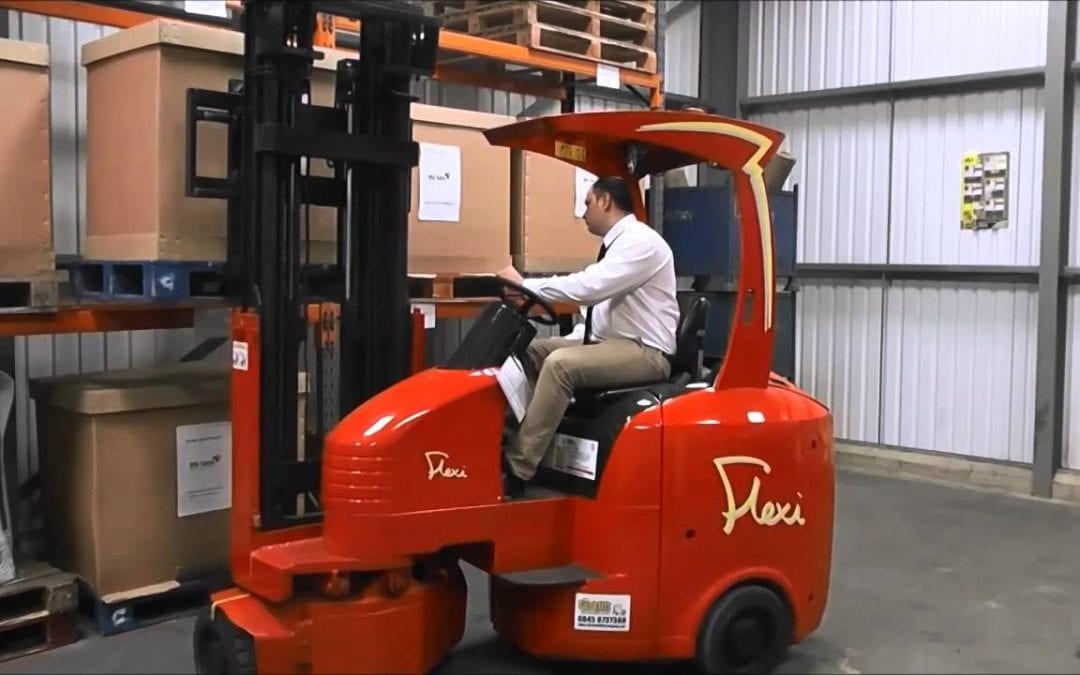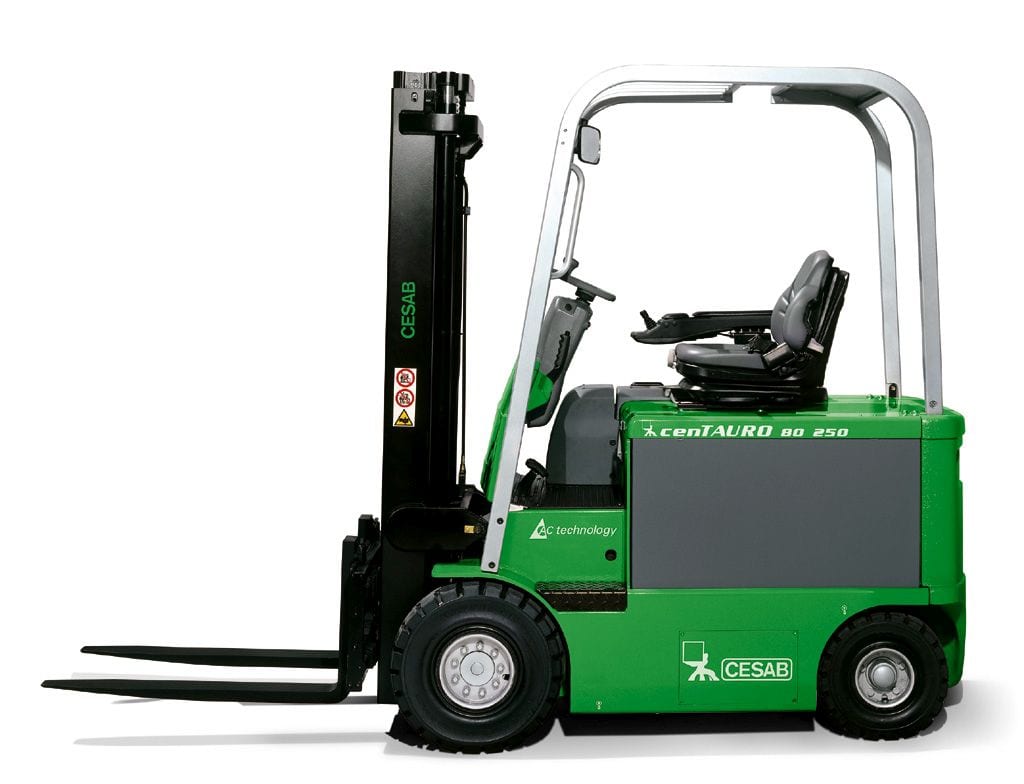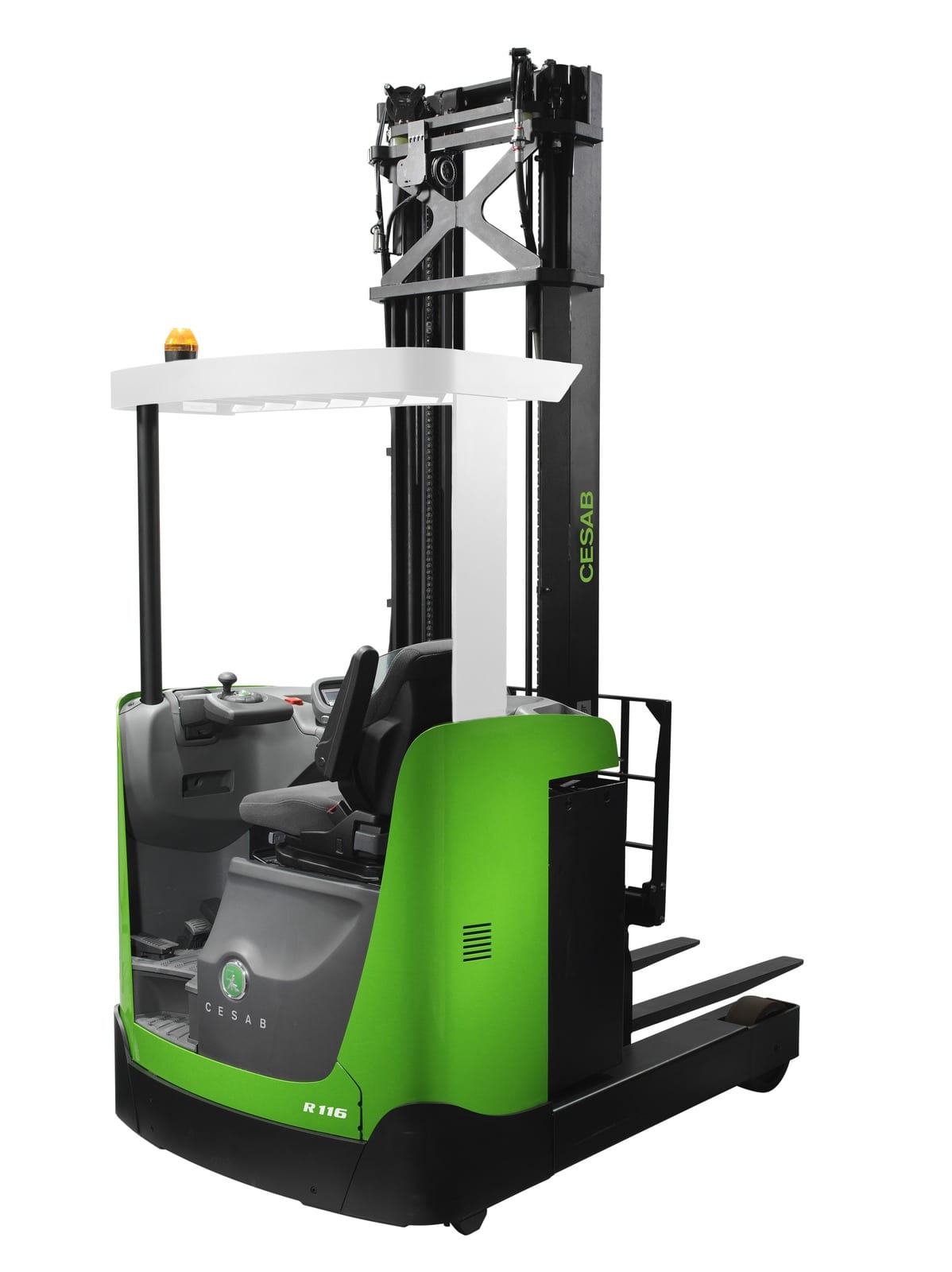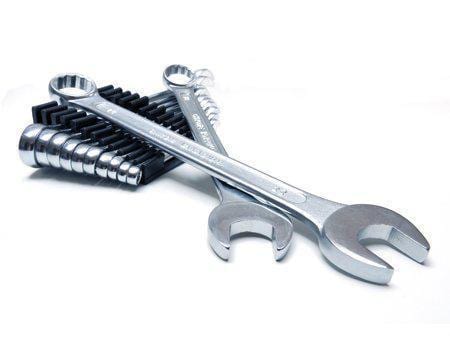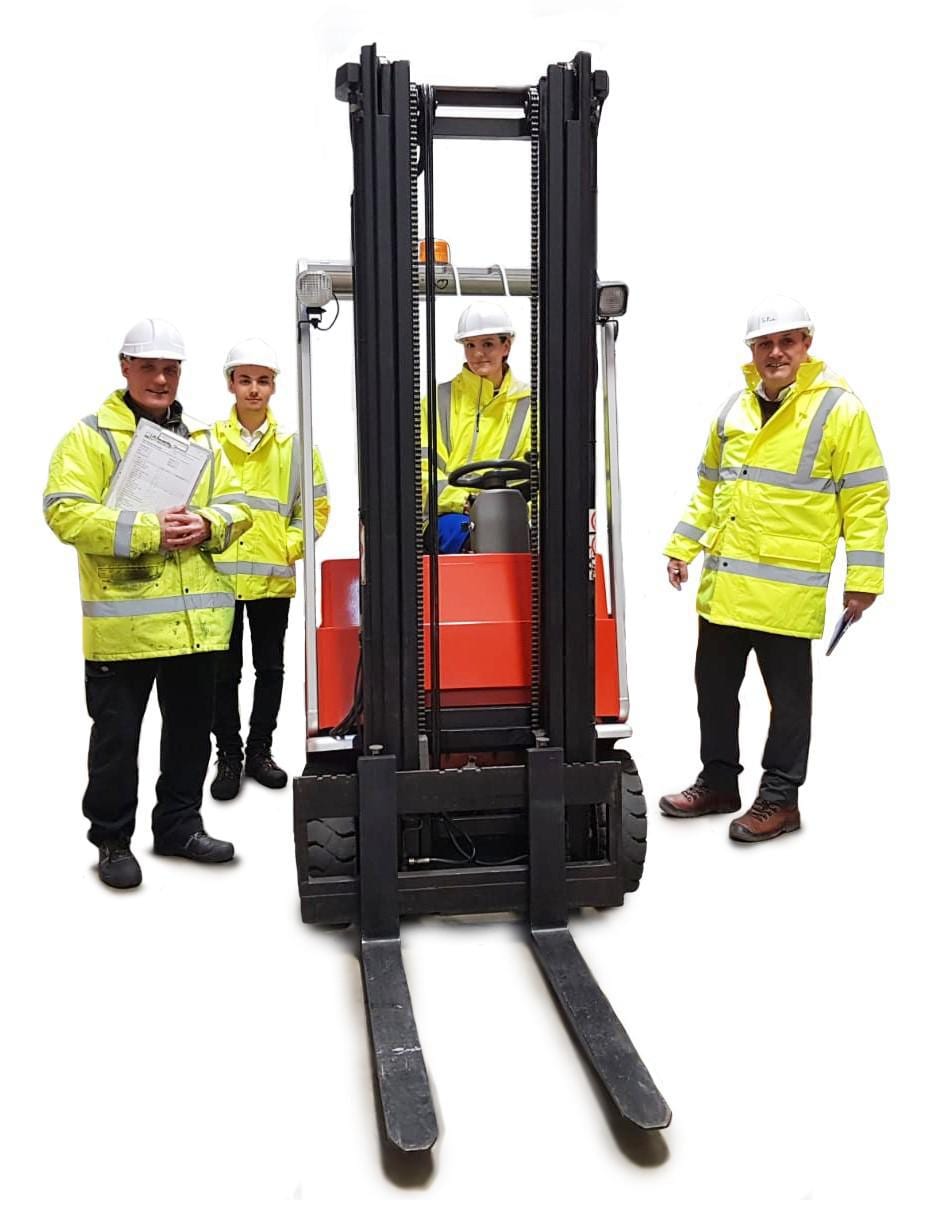Having a forklift licence is an incredibly useful tool when looking for a prospective job, hence being aware of the most common forklift practical test examination mistakes pays off when you are looking to start your career as a forklift driver! Mastering the forklift is a great way to increase your knowledge and hiring power–a moving company won’t have to worry about training you and certifying you if you’re already ready to go!
However, many testers fail their first forklift practical test certification exam. This doesn’t happen because it’s difficult, but because they fail to follow simple instructions. When you are good at driving a forklift, it’s easy to forget the basic requirements. However, these are necessary skills for the test itself.
14 Forklift Operator Mistakes During the Practical Test Examination
If you want to pass the forklift test practical exam with flying colours and get your certification, avoid these twelve forklift examination test mistakes. Once you pass your written test, you’ll have a chance to take the forklift licence exam. They are easy to forget when you are nervous so practice all of the safety and technical skills in advance of your test date.
1. Poor Forklift Operator Behaviour
The number one thing that your tester will look out for is your attitude and approach to the forklift. If you come up to the machine flippantly with no regard for safety, you aren’t very likely to pass the test (even if you drive it perfectly). Most forklift operator exam mistakes are due to poor safety behaviour.
A forklift is a dangerous machine, and you must pay attention to this. You shouldn’t be afraid of the forklift. Instead, you should demonstrate awareness of all the safety practices involving the forklift. It seems obvious, but always wear a seat belt!
2. Fails to All-Round Check
Every forklift test involves a complete inspection of the forklift itself. You should be given an approved checklist of safety measures before even touching the lift itself. If you don’t have this, don’t start the test. Ask for a copy of the checklist and wait until you receive one to get into the forklift.
If you have a checklist, don’t blow through it! Make sure that you are thoroughly checking everything before starting up the machine. The inspector watches to ensure that you know how the machine works and the necessary safety measures. Failing to do this is a major penalty and will reduce your overall score by five points.
3. Fails to look in the direction of travel
Once you’re in the forklift, you should be comfortable driving around the warehouse and following the instructions. Plenty of practice has gotten you to this point, and you are ready for the forklift licence exam. However, avoid another major mistake by always looking where you are going.
Instead of using your intuition or memory of the path, look in the direction that the forklift is pointing. This instruction seems obvious, but many operators fail their first forklift examination on obvious points like this one. Don’t lose these easy five points.
4. Fails to use the horn
Although it’s rarely used in construction or warehouse settings, the safety manuals insist that the forklift operator should use the horn whenever they turn a corner, approach a doorway, or come upon a blind spot. If you fail to use the horn properly, you can lose up to five points.
This is an essential safety measure in the forklift test and the workplace, even though it’s sometimes ignored. If you take common practice with you into the test, you will lose points and be in danger of failing–the horn is a major safety concern.
5. Operates Hydraulic Controls When Moving
One of the biggest forklift exam test mistakes is lifting the fork tines while moving. This is a huge safety violation and will almost certainly cause you to fail the forklift test. Fortunately, it’s easy to avoid: always come to a complete stop before using any of the hydraulic equipment.
When you stop, to park, load, or unload, always employ the handbrake. The instructor will be watching for this extra safety and will give you points for it. Also, it will make it easier for you to focus on the most strenuous part of the exam: loading and unloading.
6. Fork Arms: Load too High or Low When Moving
Like all aspects of the forklift examination, the arms have to be at a specific height when you are moving. Without a load, the tines need to be about 5 to 10 centimetres from the ground or directly above the front axle. This height will avoid becoming top-heavy and tipping the forklift or being too low and scraping the ground.
Once you load the forklift, you should avoid keeping the load too high or too low while moving it. Forklift loads are generally almost half the weight of the forklift itself and could tip the machine very easily if not loaded well.
If your forklift load is either too high or too low while moving, you will receive a dock of up to five points on your exam. Moving loads is the most dangerous part of the forklift exam and it’s essential to be as safe as possible while you complete this section.
7. Incorrect Tilt when Travelling
To keep your load safe, it’s crucial to tilt your package back towards the forklift a bit. This way, the pallet is leaning against the backrest of the lift and won’t fall off the front. However, if it’s tilted too far it could upset the centre of gravity and cause the forklift to tip over.
An incorrect fork tilt will cause damage, whether the forklift is loaded or not. Unloaded tines could scrape the ground or hit objects, and a load could fall off or tip the machine itself. If you have issues with tilt while travelling on a forklift, this is something to perfect before you take the test.
8. Touches Course, Racking, or Load
Part of the forklift test is a loading and travelling section. You’ll stack a load on your tines, go through a course, and unload the forklift on the other end. Of course, precision while driving and loading are a hugely important part of safely operating a forklift, and your instructor will be paying attention to this.
If you accidentally touch the course, the racking, or the load when you aren’t supposed to, you will likely be docked a few points. However, the better the rest of your drive is, the more likely your instructor is to overlook a tiny bump at the beginning of a route.
9. Fails to Apply Handbrake or Neutral
Of course, loading and unloading are a crucial part of the test. If you don’t put the forklift in neutral and apply the handbrake, your instructor will take note and dock you safety points. Fully stopping the forklift is essential when loading and unloading.
10. Fork Arms Rubbing
One of the smaller details that your instructor will look for is how well you can put your fork arms into the load. If they rub against the sides or top of the pallet, you might lose some points. This is a minor offence, and you will only lose three points. However, it’s great to get as many points as you can. Perfect loading and unloading techniques will help you get there!
11. Fork Arms Not Fully Inserted
Of course, you have to load your forklift completely before taking off to your destination. If your fork arms aren’t inserted fully before starting driving, you will get definite points taken off your final score.
When you start to insert the fork arms into the pallet, make sure that you go all the way into the openings. If your load is flush with the side of the forklift, you’re far enough and can start to lift safely!
12. Wheels not Straight – The last of our list of Errors to Avoid During Your Forklift Practical Test Exam
Once you’re parked or while you’re loading and unloading, double-check to ensure that your wheels are straight. This seems like a small thing, but it’s worth three points every time you stop (which can add up on a test score). Straight wheels are essential for easier loading and unloading your forklift, and your test instructor will be watching for them.
While this is a minor offence, it can take up to three points off your total score. If you get a point or two taken off other areas, these can add up and become a failing grade. Keep your wheels straight and you’ll get three easy points added to your score.
13. Incorrect or unsafe material loading
If you want to drive a forklift for a living, you’ll need to load and unload materials regularly. As such, a big part of the practical test will be about ensuring that you can do load materials in a safe and satisfactory manner. One of the most common fork truck examination errors we see is operators who load their palettes without proper knowledge of safe procedures.
Before you attempt to lift a palette, you must ensure that the weight of the item is distributed evenly. Otherwise, there is a risk that the forklift will tip over. Another thing that you must do is to ensure that your forklift tip is a foot away from the palette before you attempt to lift it.
Finally, best practices dictate that you scan the area for anyone who might be in the way, and when you do pick up the palettes, ensure that it’s done in a slow and deliberate manner.
14. Failure to wear your seatbelt – The last of our list of Errors to Avoid During Your Forklift Practical Test Exam
One of the simplest and most easily avoided forklift practical test examination mistakes involves wearing a seatbelt. There are very few scenarios where you shouldn’t wear a seat belt when using a forklift. Indeed, the Health and Safety Executive (HSE) recommends that if a restraining system is fitted, it should always be used.
The reason why forklifts have seatbelts is because they will protect you from falling or jumping out of the cabin should the forklift fall. While your natural instinct might be to jump from a falling forklift, it can cause you more damage by getting caught between the cab and the floor. Wearing a belt is smart, so ensure it’s one of the first things you do in your practical exam.
You may also like
Final Thoughts
If all of these forklift operator practical test exam mistakes scare you, don’t be afraid. This is like a driving test–no one expects you to be perfect, and if you don’t pass you can always retake it. However, practice will help you find confidence in your abilities, and driving a forklift can be second nature.
If you pay attention to these little details, you will be in a far better position to avoid these common mistakes during your forklift practical test examination and walk away with a forklift driver’s license in your pocket. You’ll be able to get a pay raise at your current job or apply for a job with a leg up on the competition. Keep practicing, focus on safety, and you’re sure to pass your test!
Finally, at Angus Lift Trucks we have ample experience in lift truck training courses in the UK and across the Midlands, in and around areas like Leicester, Nottingham, Northampton, Birmingham, Warwick, Derby, East & West Midlands. And, if you intend to buy a forklift, rent a lift truck, or service your forklifts in the UK, do get in touch with our team at Angus Lift Trucks
This post is also available in:
Français
Deutsch
Italiano
Português
Español
Български
Hrvatski
Eesti
Latviešu
Lietuvių
Polski
Português
Русский
Slovenčina
Slovenščina
Türkçe
Українська
Albanian
Čeština
Dansk
Nederlands
Ελληνικά
Magyar
Română

